Abstract
Although previous research showed that a visual counter increased the rate of responding on a large fixed-ratio schedule, a theoretical analysis of the factors responsible for fixed-ratio performance suggests that the primary control by number of responses since reinforcement is to weaken the performance. The present experiment employed a multiple schedule in which the same fixed-ratio value alternated with and without an added counter. It tested the hypothesis that the differential reinforcement of high-rate responding masked the attenuation of the fixed-ratio performance from the unoptimal discriminative control produced by the fixed relation between number of responses and reinforcement. In the present experiment the postreinforcement pause was consistently longer in the components with the added counter, while running rates remained comparable between the components of the multiple schedule. Both components of the multiple schedule involved differential reinforcement of high-rate responding while only the components with the added counter amplified the discriminative control by number of pecks since reinforcement.
Keywords: added counter, fixed-ratio schedule, key peck, pigeons
Full text
PDF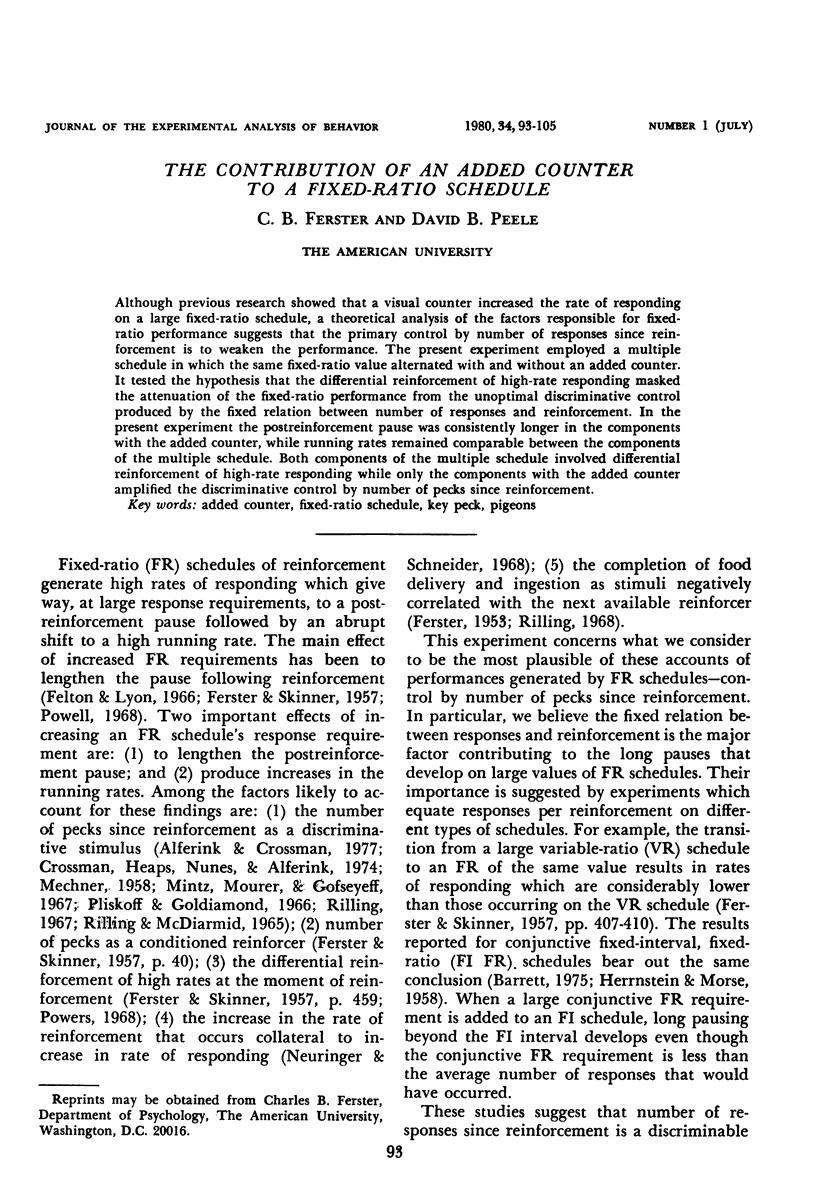

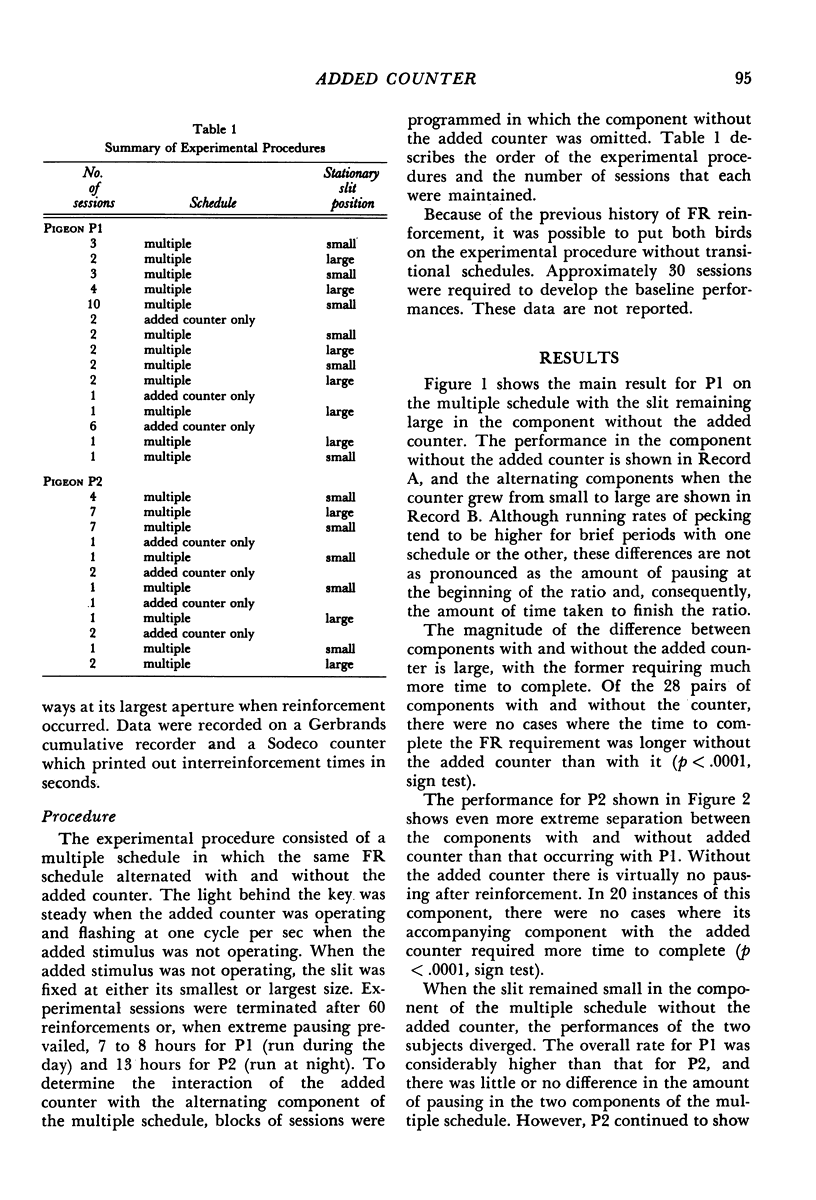
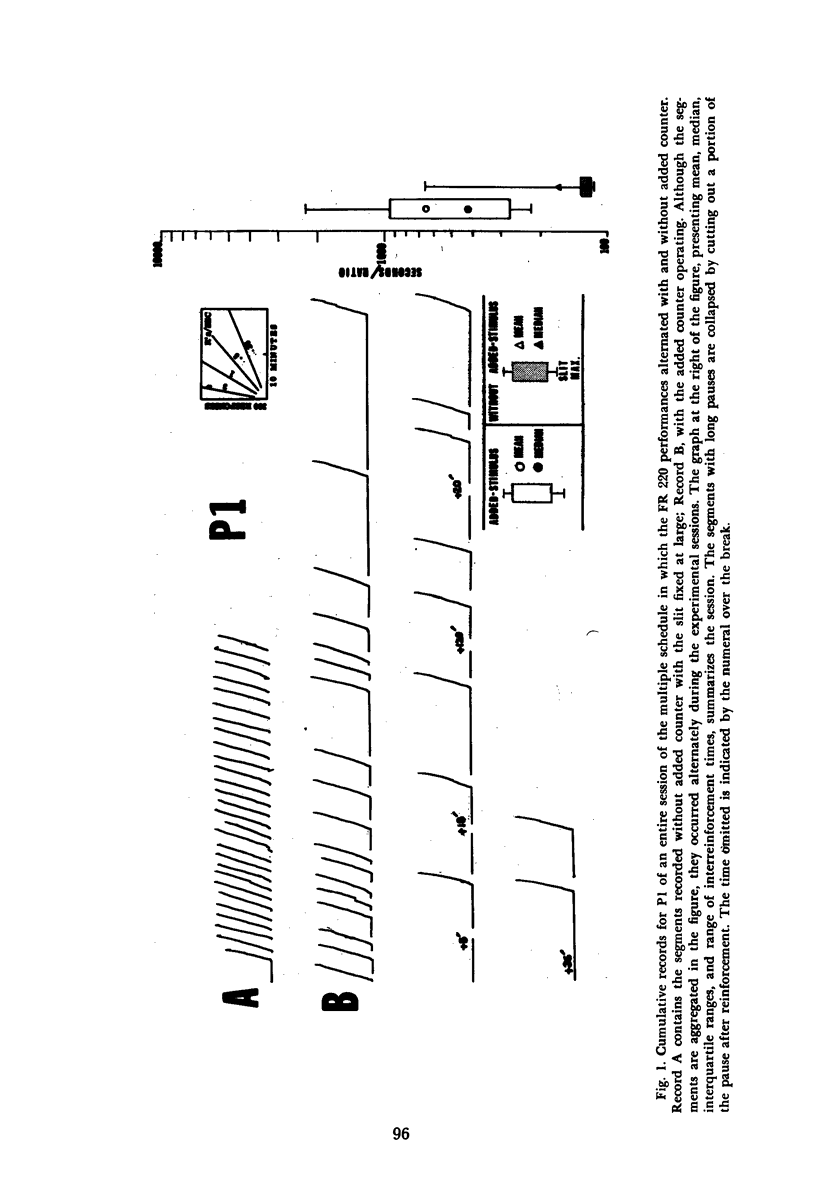
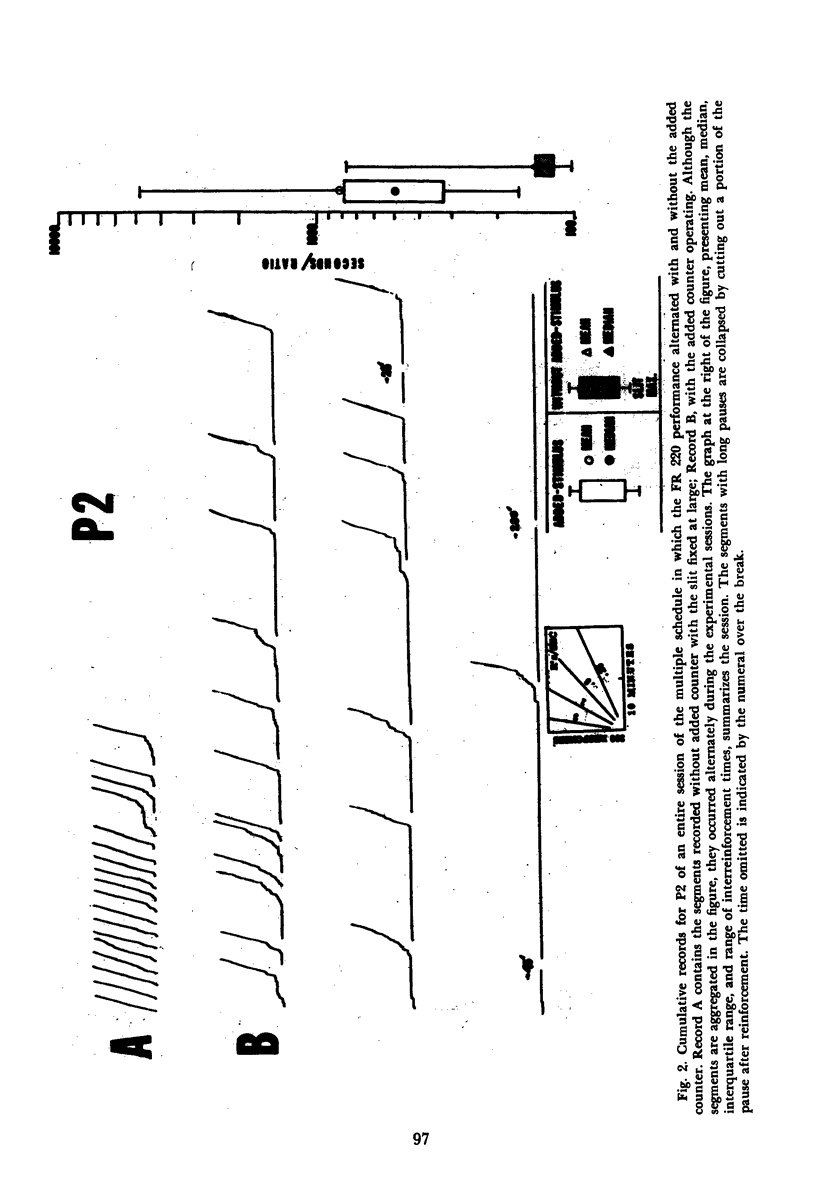


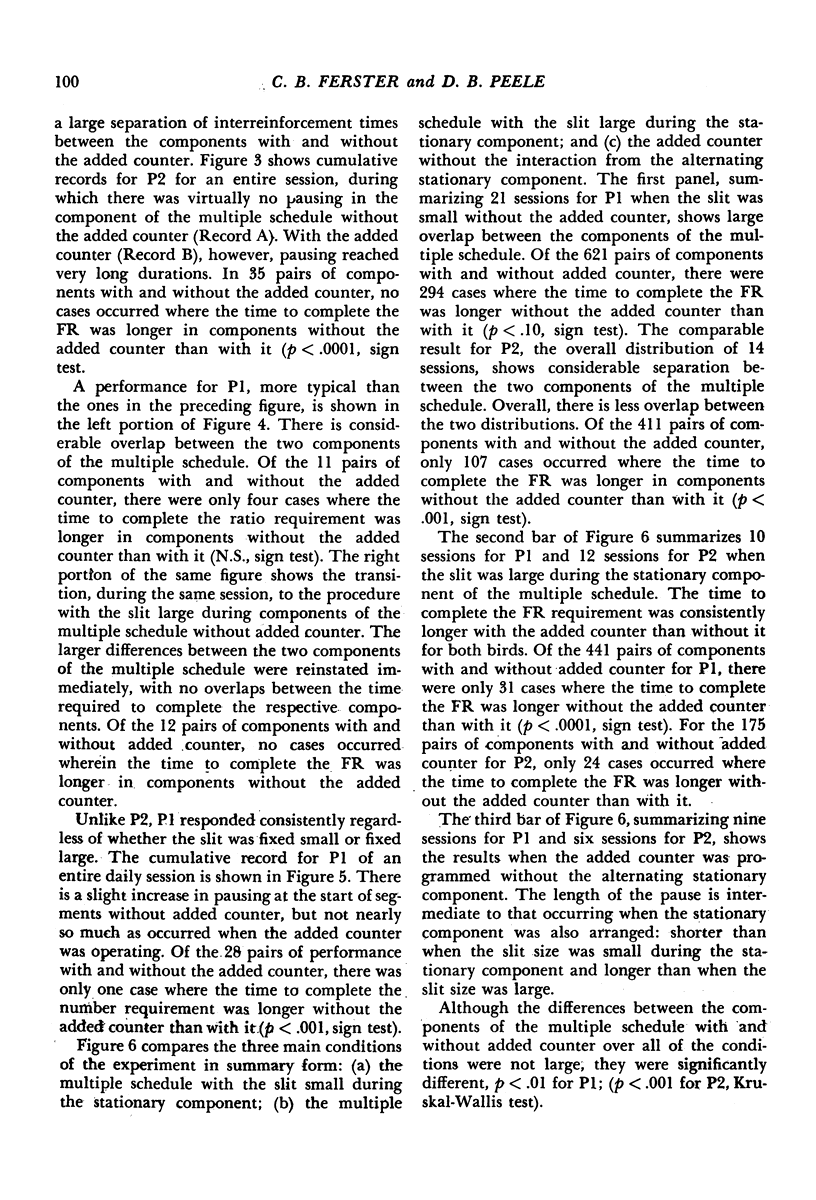
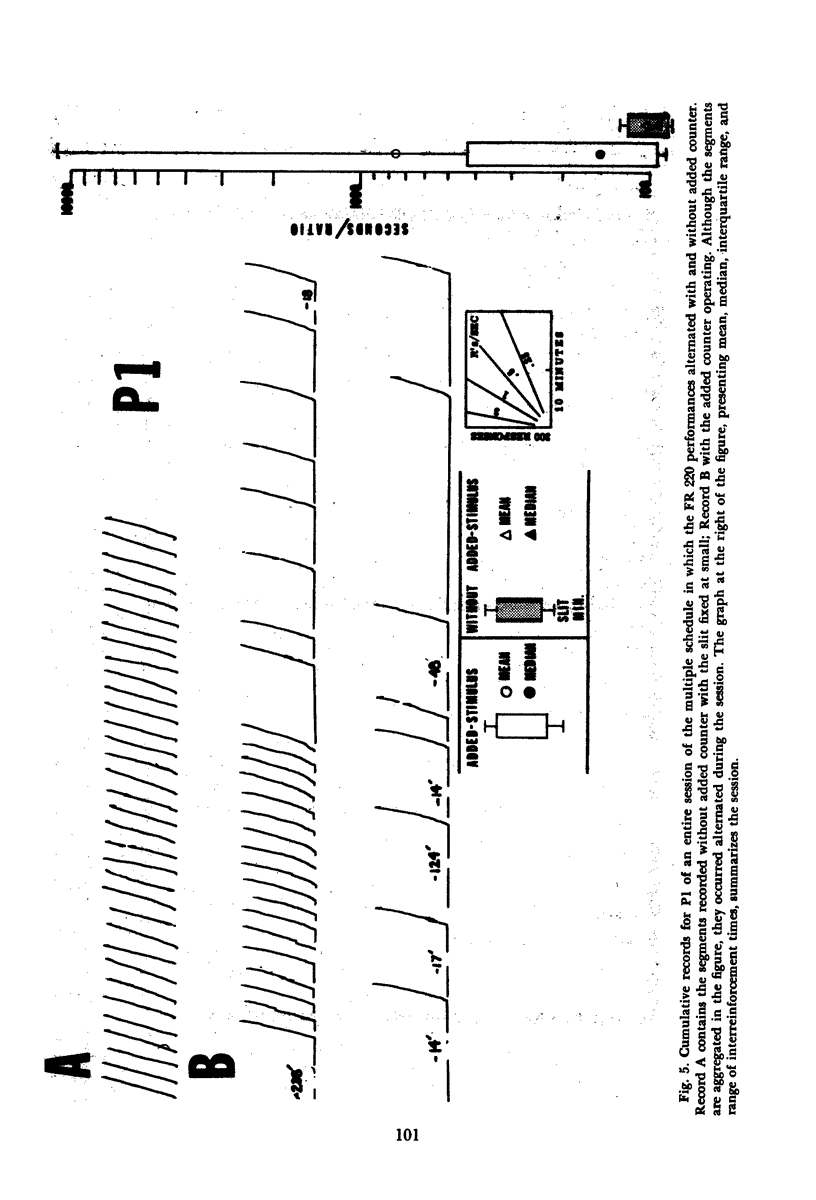
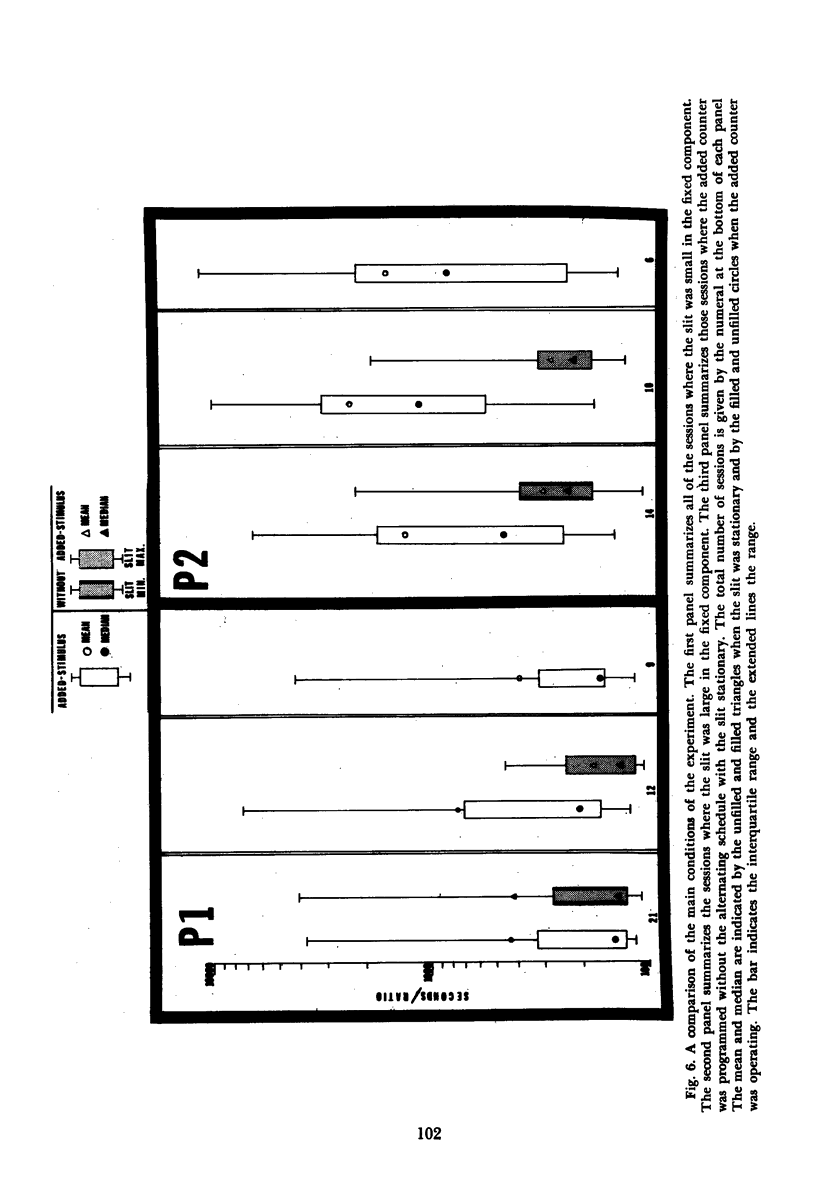
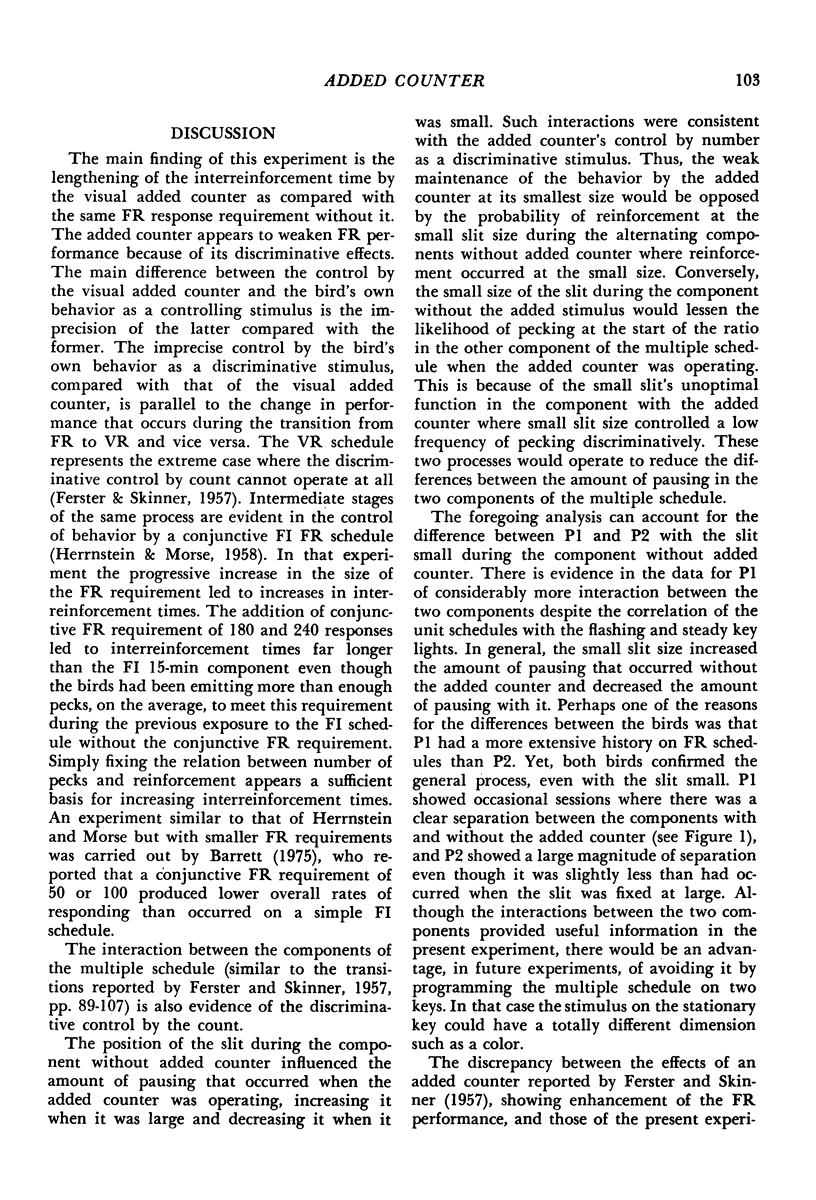
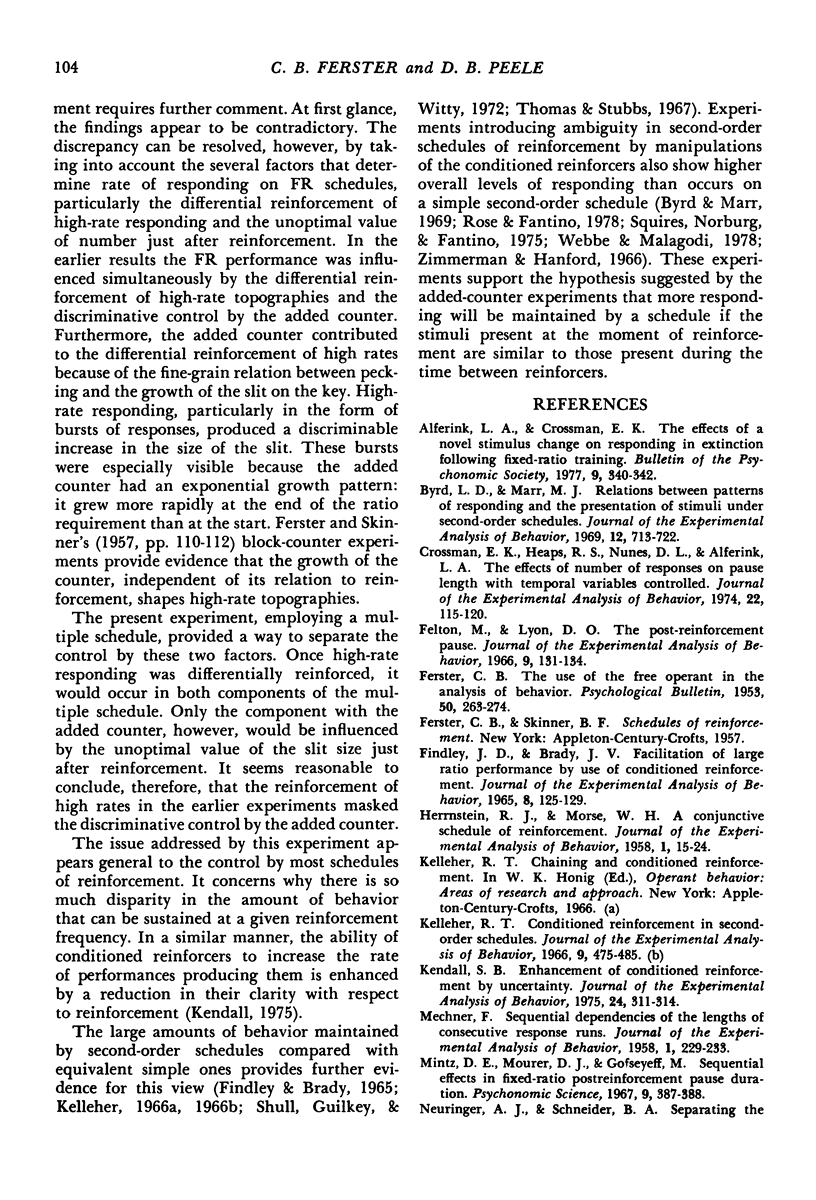
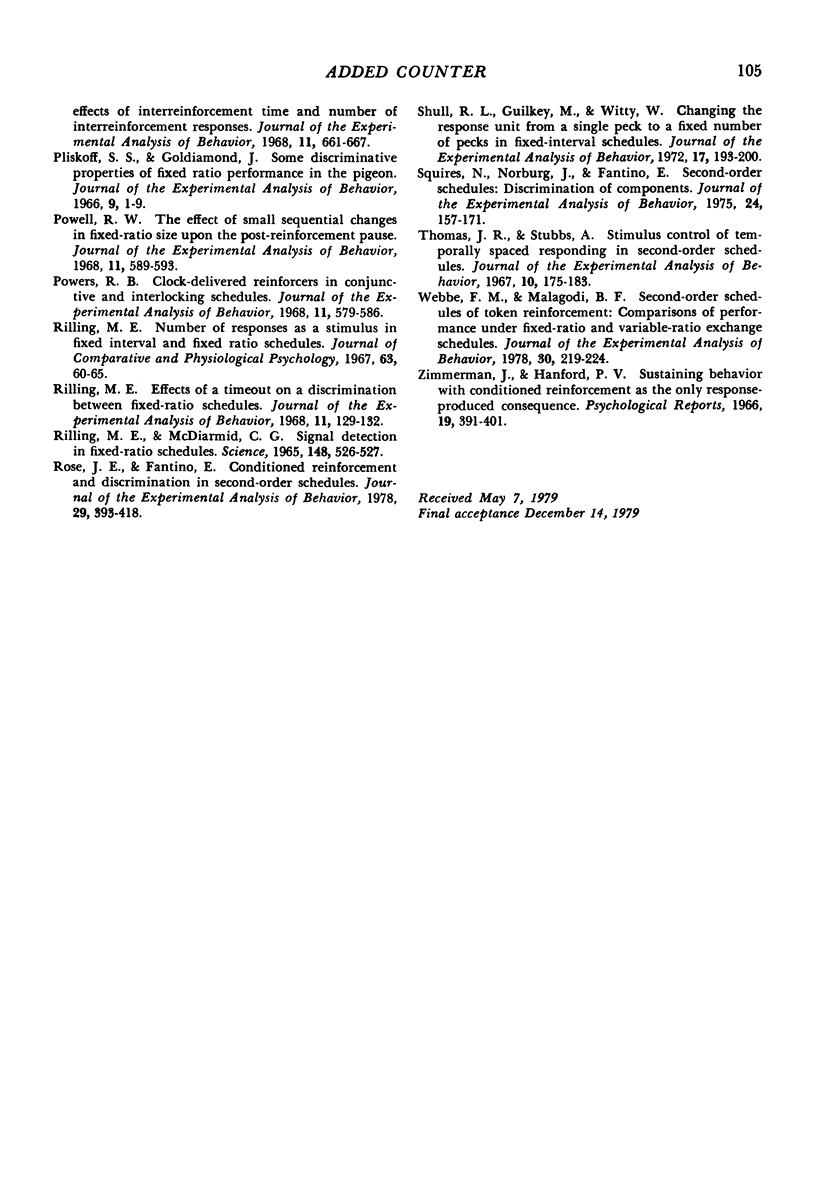
Selected References
These references are in PubMed. This may not be the complete list of references from this article.
- Byrd L. D., Marr M. J. Relations between patterns of responding and the presentation of stimuli under second-order schedules. J Exp Anal Behav. 1969 Sep;12(5):713–722. doi: 10.1901/jeab.1969.12-713. [DOI] [PMC free article] [PubMed] [Google Scholar]
- Crossman E. K., Heaps R. S., Nunes D. L., Alferink L. A. The effects of number of responses on pause length with temporal variables controlled. J Exp Anal Behav. 1974 Jul;22(1):115–120. doi: 10.1901/jeab.1974.22-115. [DOI] [PMC free article] [PubMed] [Google Scholar]
- FERSTER C. B. The use of the free operant in the analysis of behavior. Psychol Bull. 1953 Jul;50(4):263–274. doi: 10.1037/h0055514. [DOI] [PubMed] [Google Scholar]
- FINDLEY J. D., BRADY J. V. FACILITATION OF LARGE RATIO PERFORMANCE BY USE OF CONDITIONED REINFORCEMENT. J Exp Anal Behav. 1965 Mar;8:125–129. doi: 10.1901/jeab.1965.8-125. [DOI] [PMC free article] [PubMed] [Google Scholar]
- Felton M., Lyon D. O. The post-reinforcement pause. J Exp Anal Behav. 1966 Mar;9(2):131–134. doi: 10.1901/jeab.1966.9-131. [DOI] [PMC free article] [PubMed] [Google Scholar]
- HERRNSTEIN R. J., MORSE W. H. A conjunctive schedule of reinforcement. J Exp Anal Behav. 1958 Jan;1:15–24. doi: 10.1901/jeab.1958.1-15. [DOI] [PMC free article] [PubMed] [Google Scholar]
- Kendall S. B. Enhancement of conditioned reinforcement by uncertainty. J Exp Anal Behav. 1975 Nov;24(3):311–314. doi: 10.1901/jeab.1975.24-311. [DOI] [PMC free article] [PubMed] [Google Scholar]
- Mechner F. Sequential dependencies of the lengths of consecutive response runs. J Exp Anal Behav. 1958 Aug;1(3):229–233. doi: 10.1901/jeab.1958.1-229. [DOI] [PMC free article] [PubMed] [Google Scholar]
- Neuringer A. J., Schneider B. A. Separating the effects of interreinforcement time and number of interreinforcement responses. J Exp Anal Behav. 1968 Nov;11(6):661–667. doi: 10.1901/jeab.1968.11-661. [DOI] [PMC free article] [PubMed] [Google Scholar]
- Pliskoff S. S., Goldiamond I. Some discriminative properties of fixed ratio performance in the pigeon. J Exp Anal Behav. 1966 Jan;9(1):1–9. doi: 10.1901/jeab.1966.9-1. [DOI] [PMC free article] [PubMed] [Google Scholar]
- Powell R. W. The effect of small sequential changes in fixed-ratio size upon the post-reinforcement pause. J Exp Anal Behav. 1968 Sep;11(5):589–593. doi: 10.1901/jeab.1968.11-589. [DOI] [PMC free article] [PubMed] [Google Scholar]
- Powers R. B. Clock-delivered reinforcers in conjunctive and interlocking schedules. J Exp Anal Behav. 1968 Sep;11(5):579–586. doi: 10.1901/jeab.1968.11-579. [DOI] [PMC free article] [PubMed] [Google Scholar]
- RILLING M., MCDIARMID C. SIGNAL DETECTION IN FIXED-RATIO SCHEDULES. Science. 1965 Apr 23;148(3669):526–527. doi: 10.1126/science.148.3669.526. [DOI] [PubMed] [Google Scholar]
- Rilling M. Effects of timeout on a discrimination between fixed-ratio schedules. J Exp Anal Behav. 1968 Mar;11(2):129–132. doi: 10.1901/jeab.1968.11-129. [DOI] [PMC free article] [PubMed] [Google Scholar]
- Rilling M. Number of responses as a stimulus in fixed interval and fixed ratio schedules. J Comp Physiol Psychol. 1967 Feb;63(1):60–65. doi: 10.1037/h0024164. [DOI] [PubMed] [Google Scholar]
- Rose J. E., Fantino E. Conditioned reinforcement and discrimination in second-order schedules. J Exp Anal Behav. 1978 May;29(3):393–418. doi: 10.1901/jeab.1978.29-393. [DOI] [PMC free article] [PubMed] [Google Scholar]
- Shull R. L., Guilkey M., Witty W. Changing the response unit from a single peck to a fixed number of pecks in fixed-interval schedules. J Exp Anal Behav. 1972 Mar;17(2):193–200. doi: 10.1901/jeab.1972.17-193. [DOI] [PMC free article] [PubMed] [Google Scholar]
- Squires N., Norborg J., Fantino E. Second-order schedules: discrimination of components. J Exp Anal Behav. 1975 Sep;24(2):157–171. doi: 10.1901/jeab.1975.24-157. [DOI] [PMC free article] [PubMed] [Google Scholar]
- Thomas J. R., Stubbs A. Stimulus control of temporally spaced responding in second-order schedules. J Exp Anal Behav. 1967 Mar;10(2):175–183. doi: 10.1901/jeab.1967.10-175. [DOI] [PMC free article] [PubMed] [Google Scholar]
- Webbe F. M., Malagodi E. F. Second-order schedules of token reinforcement: comparisons of performance under fixed-ratio and variable-ratio exchange schedules. J Exp Anal Behav. 1978 Sep;30(2):219–224. doi: 10.1901/jeab.1978.30-219. [DOI] [PMC free article] [PubMed] [Google Scholar]
- Zimmerman J., Hanford P. V. Sustaining behavior with conditioned reinforcement as the only response-produced consequence. Psychol Rep. 1966 Oct;19(2):391–401. doi: 10.2466/pr0.1966.19.2.391. [DOI] [PubMed] [Google Scholar]


